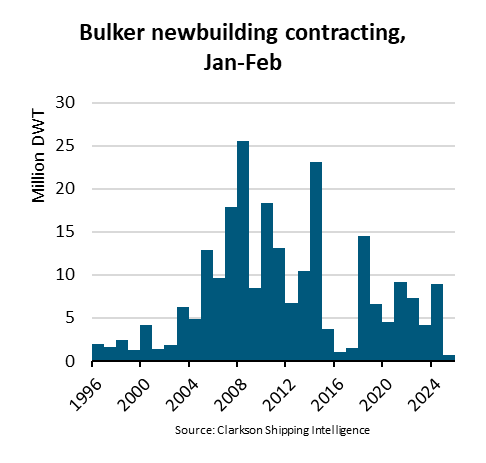All about methanol
What is methanol?
Methanol (methyl alcohol, CH3OH or MeOH) is a biodegradable wood alcohol used to make everything from plastics to paints and pharmaceuticals. Although it is toxic and highly flammable, it dissolves in water and biodegrades quickly. Methanol has been used in industrial applications for over 100 years, but it’s now also showing great promise as a clean and sustainable future fuel for maritime applications.
What types of methanol are there?
Broadly speaking, methanol can be categorised into fossil-based methanol and renewable methanol. Fossil-based methanol is produced from coal or natural gas. Renewable methanol can be made from things like biomass or captured CO2 combined with green hydrogen.
What colour is methanol?
Methanol is a colourless liquid, but colour names are used to show what it’s made from:
• Green methanol is made from biomass or captured CO2 and green hydrogen
• Blue methanol is made using blue hydrogen in combination with carbon capture technology
• Grey methanol is produced using natural gas
• Brown methanol is produced using coal.
Green methanol is the most environmentally sustainable. Blue methanol still significantly reduces well-to-tank CO2 emissions compared to fossil fuels like diesel. One of the biggest challenges for maritime decarbonisation is that most methanol today is either grey or brown. All types of methanol could lead to a tank-to-wake CO2 reduction of about 7% compared to diesel. However, if we take the well-to-wake approach (from production to utilisation), the CO2 impact of grey and brown methanol is worse than that of diesel. This is why green and blue methanol are the only real alternatives when targeting well-to-tank GHG reduction.
Is methanol a gas or a liquid?
Methanol is a liquid at atmospheric pressure.
How is methanol fuel produced?
If you’re wondering where methanol fuel comes from, it has traditionally been produced and consumed as a chemical feedstock and is relatively new as a marine fuel. Production is expected to increase as demand from the shipping industry grows, and a growing proportion of that supply will be renewable green methanol.
Grey and brown methanol are made with fossil-fuel feedstocks, either natural gas or coal. Low-carbon or blue methanol is produced using captured carbon and renewable electricity or green hydrogen in place of natural gas. Methanol made from renewable sources using renewable energy is known as green methanol.
Methanol and the environment
Is methanol as fuel good for the environment?
The main benefit of green methanol is that it produces less CO2 than diesel combustion, as well as lower SOx and NOx emissions. The amount you can reduce emissions by will depend on the load your engines are running at. Studies have shown that, taking a tank-to-wake approach, by using methanol instead of heavy fuel oil (HFO):
• CO2 emissions can be cut by 7%
• SOx emissions can be cut by 99%, and
• NOx emissions can be cut by 60%.
Methanol also biodegrades rapidly in water, which also makes it less of a risk to the environment than many alternatives.
Is methanol as marine fuel bad for the environment?
The CO2 footprint of methanol varies according to how it’s produced and transported, with fossil-based methanol generating more lifetime CO2 emissions than diesel. This makes green methanol the right choice for decarbonisation. Since the methanol molecule is the same whether it is grey, brown, blue or green, blending methanol is also a viable option to support the transition from conventional to renewable marine fuels.
How can methanol help with decarbonisation in shipping and the maritime energy transition?
The methanol molecule – CH3OH – is the same whether it is produced from grey, brown, blue or green feedstocks. This means you can blend it to help you transition gradually towards using a greater percentage of sustainable green methanol.
How much will methanol reduce my emissions?
If you’re currently using diesel, switching to methanol will reduce CO2 (tank-to-wake) emissions by up to 7%, SOx emissions by up to 99% and NOx emissions by up to 60% compared to HFO operation. Green methanol has the potential to be carbon-free.
Operational considerations for methanol as marine fuel
Is methanol expensive?
Compared to diesel operation, fuel expenses can be up to 15 times higher depending on the type of methanol consumed, its price and the share of energy provided by methanol. Although fuel expenses are higher with methanol than with diesel, this should be considered in terms of today’s regulatory environment. Vessels that fail to meet CII and EEXI targets will not be allowed to operate any longer. So the extra cost of the fuel should be compared not only with today’s fossil fuel price but with the cost of a brand new and more efficient ship and with the possible losses due to a mandatory stop of operations.
The Powerzeek Energy Platform has added methanol to its online marketplace in response to increased enquiries from shipowners. Powerzeek makes it easier for shipowners and trucking companies to find and buy cleaner fuels at the best available price.
Is methanol safe onboard ships?
From the perspective of onboard safety, there are well-established rules and regulations pertaining to the use of methanol as a marine fuel in the form of the IMO’s MSC.1-Circ.1621 – Interim Guidelines For The Safety Of Ships Using Methyl/Ethyl Alcohol As Fuel. Additionally, Wärtsilä has developed a safety concept for methanol engines that acts as an internal design guideline for all marine projects that involve using methanol as a fuel.
Where can I buy methanol as fuel for ships?
If you’re looking for methanol suppliers for ships, in 2020 the Methanol Institute confirmed that methanol was available at about 100 ports around the world.
Maritime-dedicated infrastructure for methanol transportation is still in the early stages of development but is expanding all the time.
How should I store methanol fuel on ships?
Converting a vessel to run on methanol requires approximately double the fuel tank volume to maintain the same level of fuel endurance as diesel. Methanol tanks also require additional cofferdams to prevent any potential leaks into machinery spaces. Finding space for a methanol fuel tank or methanol fuel container and fuel handling equipment can be challenging in conversion projects, so it’s a good idea to talk to experts and find the optimal solution for your vessel in a pre-conversion feasibility study.
You can contact Wärtsilä to discuss your options. For example, to quantify the fuel endurance and fuel requirements based on the vessel’s operating profile.
Wärtsilä MethanolPac includes everything you need for methanol supply including low-pressure equipment (a bunkering station, tank-related equipment, methanol process equipment, and a control and monitoring system) and high-pressure equipment (the methanol fuel pump unit (MFPU) and sealing and control oil pump unit (OPU)), depending on your needs.
What are the advantages and disadvantages of methanol as marine fuel?
Methanol as a marine fuel has its pros and cons, so it’s important to do your research to judge whether it’s the right solution for you.
Why is it a good idea to adopt methanol as marine fuel?
Green methanol combustion reduces emissions compared to diesel and a conversion can help you improve your EEXI (Energy Efficiency Existing Ship Index) and CII (Carbon Intensity Indicator) ratings. If you’re building a new vessel, using green methanol can help you achieve better EEDI (Energy Efficiency Design Index) and CII values. It’s one of the best available options to meet current and future emissions targets, and using green methanol will also reduce your overall greenhouse gas emissions.
Do I need to make major infrastructure changes to convert to methanol?
Thanks to methanol’s chemical properties, bunkering requires only minor adaptations to infrastructure, and no cryogenic storage is needed to convert from conventional marine fuel.
How widely available is methanol as a marine fuel?
Methanol is currently available as a marine fuel at 122 ports around the world. There are also more than 30 production sites being planned with a combined capacity of three megatons of methanol. This will be produced sustainably using renewable power and renewable feedstocks.
Methanol and compliance
How will running on methanol affect my EEXI and CII ratings?
Converting your vessel to run on methanol can have a significant impact on your EEXI and CII ratings. As the focus of EEXI and CII is on tailpipe CO2 emissions, methanol can reduce ratings by up to 7% on both indexes as demonstrated in simulations. When considering green methanol and the possible introduction of a well-to-tank approach by the IMO, a reduction of up to 88% should be possible depending on the source of the fuel.
How can using methanol as a marine fuel help me comply with regulations?
Current regulations measure the tank-to-wake emissions. When weighing up future-fuel options, it is increasingly necessary to consider the well-to-wake approach to calculating GHG emissions. In that approach, green methanol is the viable alternative.
Why choose methanol for a conversion or newbuild
Is it possible to convert an existing vessel for methanol use?
Conversion is certainly possible, but there are some things to consider. First, check out the methanol availability in your operating area and consider what conversion could mean for your vessel from a business point of view. Next, get in touch with Wärtsilä for a technical feasibility study on the practicalities of conversion, including which engines would be converted, where to locate the main equipment, how to arrange the fuel storage and piping onboard, as well as what safety systems are needed and how these will be controlled.
Which methanol-fuelled engines are available?
The Wärtsilä ZA40S is available for methanol conversion and the Wärtsilä 32 methanol is available for newbuild projects.
Which types of methanol can be used in Wärtsilä engines?
Any methanol that meets the engine specifications can be used. (Green methanol will be better for the environment.)
Are any vessels currently operating on methanol?
According to the classification society DNV, there are 22 methanol ships – vessels currently using methanol as marine fuel. Two are conversions with 4-stroke engines; the rest are fitted with 2-stroke engines and were built to enable methanol operation. The conversions are a RoPax vessel and a pilot boat. The newbuilds are all tankers that are used to transport methanol.
Future trends for methanol
What external pressures are driving methanol’s uptake as a marine fuel?
Regulations are tightening, making methanol an increasingly attractive option. Measures like the EU’s Fit for 55 package, which aims to achieve a 55% reduction in greenhouse gas emissions from 1990 levels by 2030, will have a significant impact on the maritime industry. The package is asking the industry to pick up the pace and look beyond tailpipe emissions to take the entire fuel supply chain into account. This is clearly evident in the FuelEU Maritime proposal, part of the Fit for 55 package, which sets limits for maritime fuels’ greenhouse gas intensity and levies fines for non-compliance.
Want to know more?
Whether you know that methanol as a marine fuel is right for you, or you’re still considering your options, there’s a lot of information to take in. Wärtsilä’s experts can help you define the options that best support your decarbonisation strategy. This is done following a simple three-step approach with Wärtsilä Decarbonisation Services.
Source: Wartsila
The opinions expressed herein are the author's and not necessarily those of The Xinde Marine News.
Please Contact Us at:
media@xindemarine.com


 Ningbo Containerized Freight Index Weekly Commentar
Ningbo Containerized Freight Index Weekly Commentar  Ningbo Containerized Freight Index Weekly Commentar
Ningbo Containerized Freight Index Weekly Commentar  Ningbo Containerized Freight Index Weekly Commentar
Ningbo Containerized Freight Index Weekly Commentar  BIMCO Shipping Number of the Week: Bulker newbuildi
BIMCO Shipping Number of the Week: Bulker newbuildi  Ningbo Containerized Freight Index Weekly Commentar
Ningbo Containerized Freight Index Weekly Commentar  Ningbo Containerized Freight Index Weekly Commentar
Ningbo Containerized Freight Index Weekly Commentar